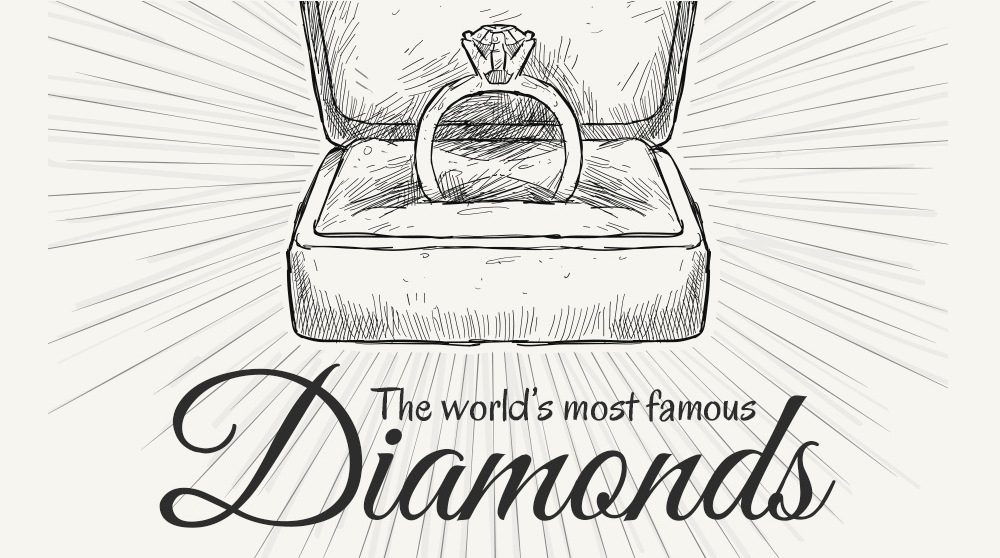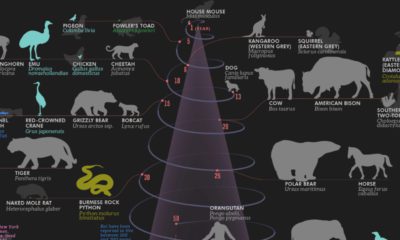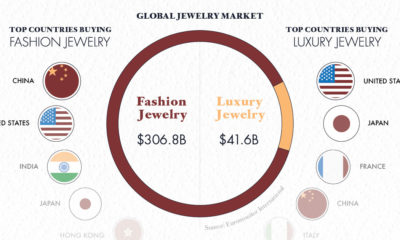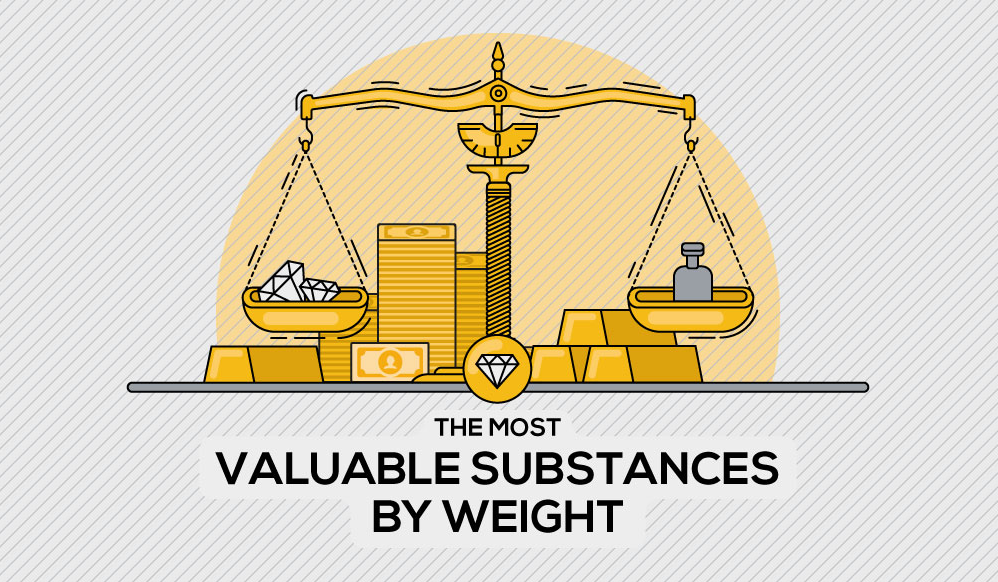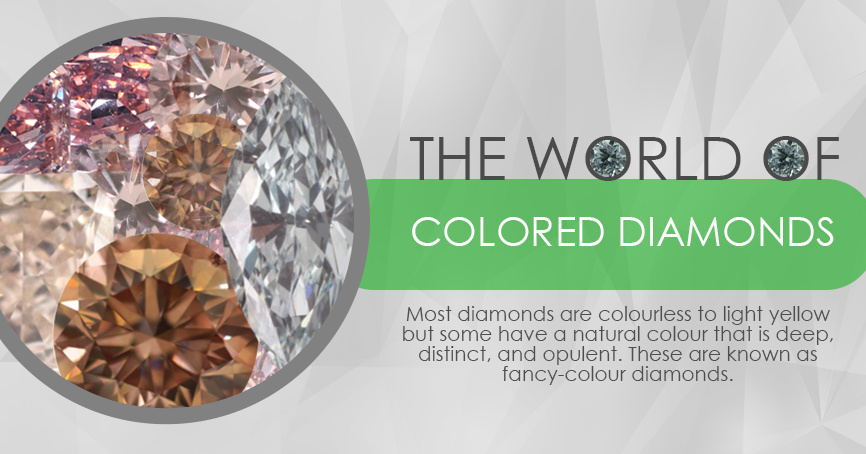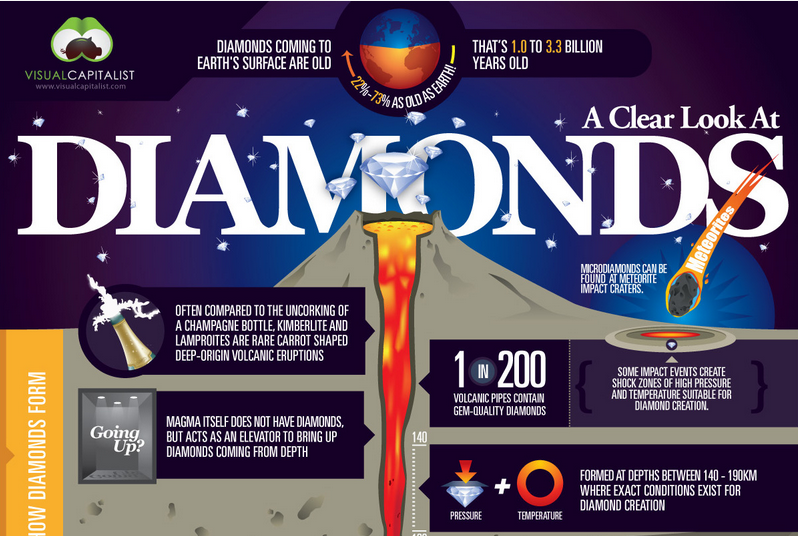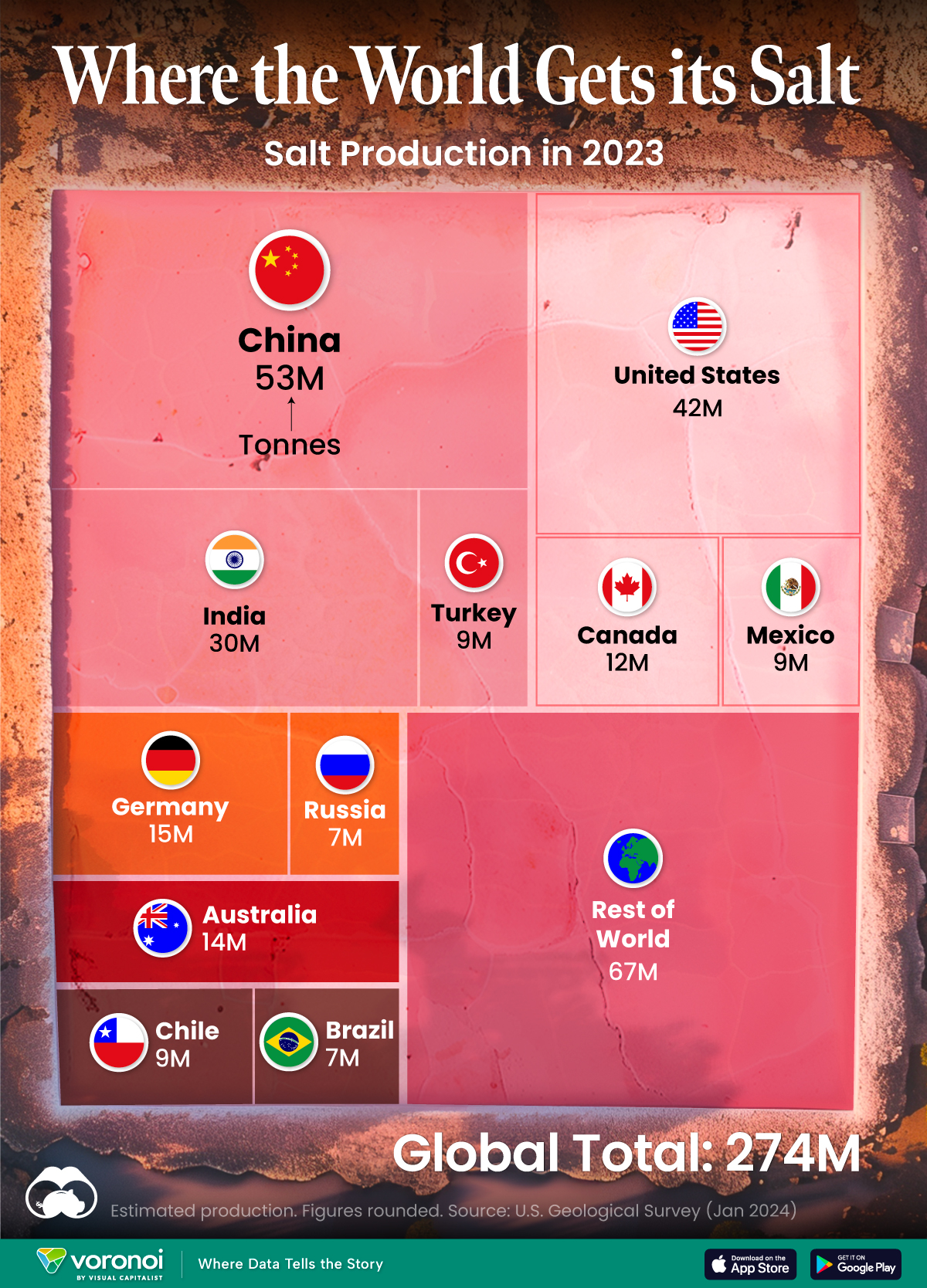Mining
The World’s Most Famous Diamonds

The World’s Most Famous Diamonds
The stories and histories of the most famous diamonds
You may have heard of the Cullinan Diamond or the Hope Diamond before, but do you know the stories behind these legendary finds?
Today’s infographic looks at the history and characteristics of six of the most famous diamonds.
A Diamond Primer
Every diamond is unique, and as a result the value of a particular diamond is partially determined by the eye of the beholder. The diamond industry generally uses a set of criteria called the Four C’s to help evaluate the potential value of a diamond: Clarity, Cut, Carats, and Color.
Most diamonds found have major deficiencies in one or more of the above categories. For example, while a diamond may be clear and large in size, it may have a less desirable color and shape. In a previous infographic, we explain the importance of these characteristics in more depth, and we’ve also previously posted on the significance of rare-colored diamonds.
The most famous diamonds in the world are exceptionally rare: they tend to excel in all four of the above categories. They are a desired color and shape, have great clarity, and are giant in size.
The Most Famous Diamonds
The stories behind six of the most famous diamonds in brief:
The Cullinan Diamond: Perhaps the most well-known, the Cullinan Diamond was discovered in 1905 in South Africa. Weighing in at 3,106.75 carats, the Cullinan is the largest rough gem-quality diamond ever discovered. The diamond was ultimately cut into nine smaller stones including the 530.20 carat Star of Africa, which is valued at over $400 million alone.
The Hope Diamond: The Hope Diamond is a grayish-blue diamond that was discovered in India at an unknown date. It has a long history, in which it changed hands numerous times between countries and eventually ended up at the Smithsonian Institute in Washington, D.C.
The Centenary Diamond: The Centenary Diamond is considered to be one of the most flawless diamonds, both internally and externally. Discovered in South Africa, it was unveiled in its final form by De Beers in 1991. The current owner is unknown.
The Regent Diamond: This pale blue diamond was discovered by a slave in India in 1698. After eventually making it to the crowns of Louis XV and Louis XVI in France, it is now on display at the Louvre in Paris and weighs 140.64 carats.
The Koh-i-Noor Diamond: Meaning “Mountain of Light” in the Persian language, this diamond was discovered at a mine in India. It is of the finest white color, and made its way from a Hindu temple eventually to the Crown of Queen Elizabeth in 1850.
The Orlov Diamond: Discovered in India at an unknown date, this jewel retains its traditional Indian rose-style cut. The Orlov, which weighs in at 189.62 carats and is white with a faint bluish-green color, now rests in the Kremlin in Russia.
The world’s most famous diamonds all have intriguing stories behind their discoveries. However, a diamond prospector doesn’t need to find a diamond to strike it rich: check out the infographic story of Diamond Fields, a diamond company that ended up finding and auctioning off one of the world’s richest nickel deposits for billions.
Original graphic by: Gear Jewellers
Mining
The Biggest Salt Producing Countries in 2023
In this graphic, we break down global salt production in 2023. China is currently the top producer, accounting for almost 20% of output.
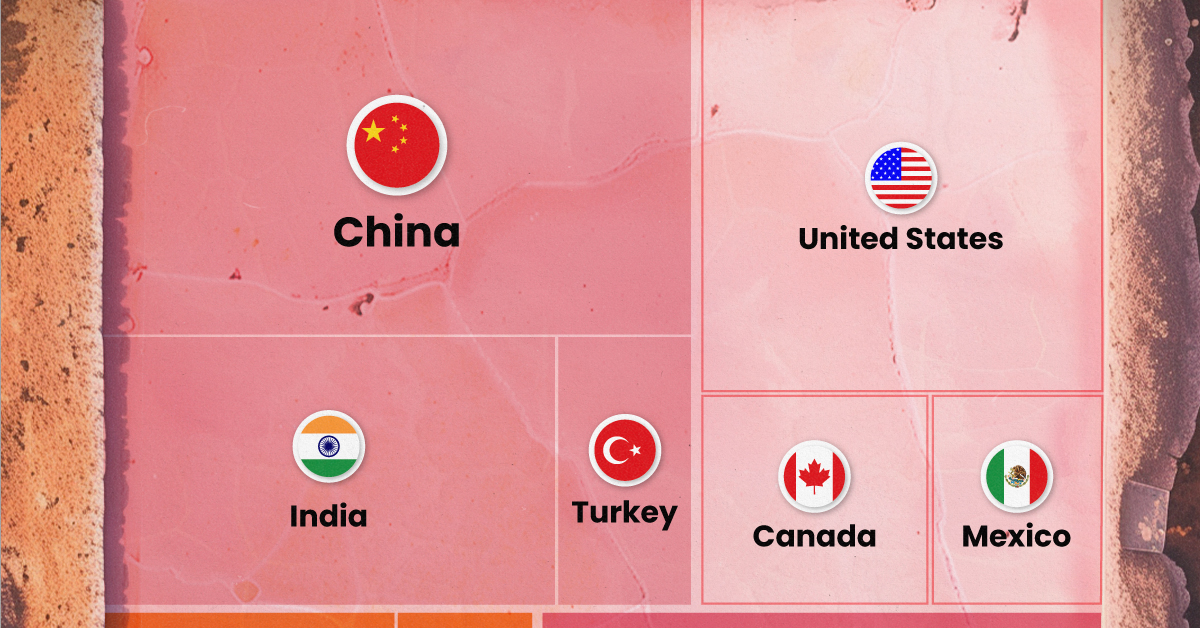
The Biggest Salt Producing Countries in 2023
This was originally posted on our Voronoi app. Download the app for free on iOS or Android and discover incredible data-driven charts from a variety of trusted sources.
Humanity has utilized salt for thousands of years, dating back to ancient civilizations. The U.S. alone consumes more than 48 million tonnes of salt per year.
In this graphic, we break down global salt production in 2023, measured in tonnes. These estimates come from the U.S. Geological Survey’s latest commodity report on salt.
Ample Supply
Salt is essential for human life, serving various purposes including food preservation, flavor enhancement, industrial processes, and health maintenance. The good news is that the world’s continental resources of salt are vast, and the salt content in the oceans is nearly unlimited.
China is currently the top producer of salt, with almost 20% of the output, followed by the U.S. (15%) and India (11%).
| Country | Production (tonnes) |
|---|---|
| 🇨🇳 China | 53,000,000 |
| 🇺🇸 United States | 42,000,000 |
| 🇮🇳 India | 30,000,000 |
| 🇩🇪 Germany | 15,000,000 |
| 🇦🇺 Australia | 14,000,000 |
| 🇨🇦 Canada | 12,000,000 |
| 🇨🇱 Chile | 9,200,000 |
| 🇲🇽 Mexico | 9,000,000 |
| 🇹🇷 Turkey | 9,000,000 |
| 🇷🇺 Russia | 7,000,000 |
| 🇧🇷 Brazil | 6,600,000 |
| Rest of world | 67,000,000 |
| Global total | 273,800,000 |
The global salt market was valued at $32.6 billion in 2022.
It’s projected to grow from $34.1 billion in 2023 to $48.6 billion by 2030, with a CAGR of 5.2% during the forecast period. This suggests a surprising amount of growth for what is one of the world’s oldest and most common commodities.
Facts About the U.S. Salt Industry
In the U.S., salt is produced by 25 companies, which operate 63 plants across 16 states.
The states that produce the most salt are Kansas, Louisiana, Michigan, New York, Ohio, Texas, and Utah. Altogether, these states account for 95% of domestic production.
The primary uses of salt in the U.S. are highway de-icing (41%), chemical production (38%), and food processing (10%).
-

 Personal Finance1 week ago
Personal Finance1 week agoVisualizing the Tax Burden of Every U.S. State
-

 Misc7 days ago
Misc7 days agoVisualized: Aircraft Carriers by Country
-

 Culture1 week ago
Culture1 week agoHow Popular Snack Brand Logos Have Changed
-

 Mining1 week ago
Mining1 week agoVisualizing Copper Production by Country in 2023
-

 Misc1 week ago
Misc1 week agoCharted: How Americans Feel About Federal Government Agencies
-

 Healthcare1 week ago
Healthcare1 week agoWhich Countries Have the Highest Infant Mortality Rates?
-

 Demographics1 week ago
Demographics1 week agoMapped: U.S. Immigrants by Region
-

 Maps1 week ago
Maps1 week agoMapped: Southeast Asia’s GDP Per Capita, by Country

